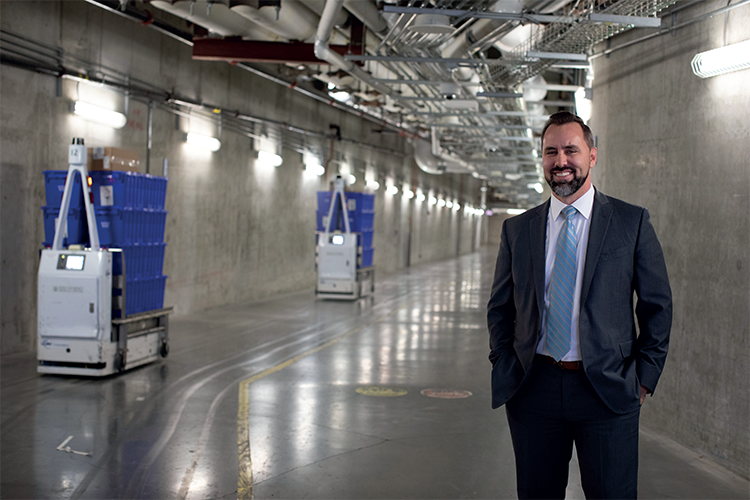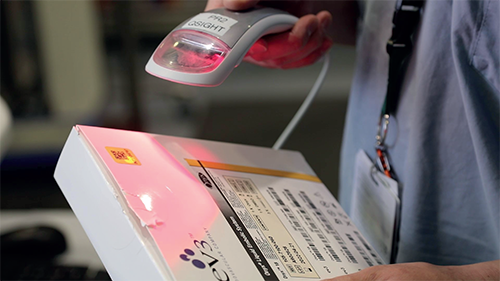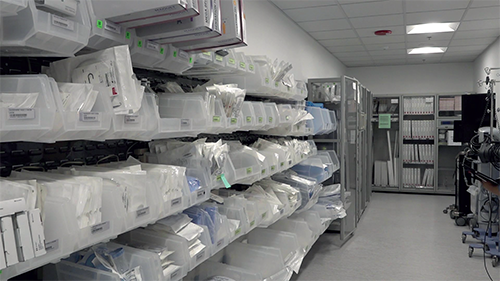
Rush University Medical Center
Life-saving supply
Having played a vital role in managing the Covid-19 pandemic, Rush University Medical Center continues striving for unparalleled clinical excellence through further integration and streamlining
An academic medical center since 1837, Rush University Medical Center (Rush) is a core component of the Rush University Medical Center System for Health, which is made up of four hospitals and clinics across Chicago’s suburbia. Known for clinical quality and patient experience, Rush University Medical Center treated 20 percent of Illinois’ ventilated Covid-19 in-patients in 2020, and has been instrumental in this year’s vaccine distribution effort. Today, the hospital continues using outcome data to consolidate its life-saving supply chain management system, and provide the most efficient medical care possible.
In March of 2020, Rush was faced with the global outbreak of Coronavirus; seeking to help as many patients as possible, the hospital used its industry-leading facilities to accommodate patients from all across Illinois.
Thanks to its existing infrastructure, the hospital was able to fare well with the increased demand; as Jeremy Strong, Vice President of Supply Chain, confirms: “Rush has done well. Our emergency department has been a huge asset, it has an ambulance bay that we can convert into a decontamination zone, lobbies that turn into intensive care units, and all the provisions necessary to make up isolation units, which we did pretty aggressively.
“We had all the infrastructure built in, including an emergency supply chain, so we handled it all pretty well. We were even taking transfers, because we had the facilities, and felt a sense of responsibility to take on as many patients as possible,” he adds.
As the effects of the pandemic become less urgent, Rush is in a strong position to accommodate a post-Covid-19 world. “The Delta variant hit a lot harder in other parts of the country, so the last few months have been manageable in comparison to what we were used to in 2020. At this point, we are dealing with our Covid patients, and vaccinations, whilst also handling our regular practice in the hospital; there are designated areas for Covid-related issues, which has helped make it more manageable,” Jeremy affirms.
The pressures of a global pandemic revealed the absolute importance of medical manufacturers and suppliers. As Jeremy explains: “Supply chain is a big part of what we do. In order to keep on top of it, we have weekly meetings with a lot of our primary suppliers, as well as our distribution partners. In these meetings we look at the existing data, and review any potential, up-coming shortages with them.
“These meetings are for discussing any issues that we might be seeing on the horizon, so that we can start building substitution plans and other arrangements. We also work in this capacity with our clinical team, in order to smooth out the utilization of certain items; some of the products we used now have alternatives, which makes things easier, but it also means we have to communicate with the clinical team about when to use those substitutes.”
Ongoing communication between its clinical and logistical departments helped steady Rush in the midst of uncertainty, as Jeremy reveals: “Our supply chain team works really well with our clinical team. They identify the need for substitutions ahead of time, we are made aware of it, and can ensure the existing product goes exactly where it needs to go.
“We aim to make our supplies go as far as possible, as efficiently as possible. We know which items are critical, and which are provisional, that’s how we try to stay ahead of it. We are connected by ongoing communication between our manufacturers and clinicians.”
 Using data technology, Rush’s supply chain team has continued to hone these strategies, and make them more accurate. “Over the past couple of years, we have invested heavily in technology that matches the clinical work flow of Rush,” states Jeremy.
Using data technology, Rush’s supply chain team has continued to hone these strategies, and make them more accurate. “Over the past couple of years, we have invested heavily in technology that matches the clinical work flow of Rush,” states Jeremy.
“On a nursing unit, for example, they use a lot of supplies as and when they need them; in order to keep better track of our stock, we have tried to develop an inventory strategy that will highlight when the pile is running low, so we can re-stock.
“We wanted to use a more weighted system because we felt it would be best if the doctors and nurses didn’t have to press any buttons, or do anything extra, in order to keep track of the supplies. They don’t have to do anything other than take supplies when they need them, and we still know what is in there. Using trends from this data, we can set up automatic reordering.
“This way, medical professionals spend a lot less time worrying about or looking for stock, because they know exactly where the equipment is kept, and how much of it we have. In the meantime, we are monitoring supply levels, and keeping an eye on any changes that might be needed,” he elaborates.
Unsurprisingly, these provisions helped cut through the chaos of the early pandemic, and kept operations running smoothly. “It’s really helped us during the Covid-19 outbreak; especially with syringes and basic things like that,” Jeremy asserts. “We can look at our system and know what we have, and where it’s going, we can also assign priority to items that are running low.
“Using data this way means we can feed the body of information we already have, and make better decisions on proper inventory strategy. In some of the higher end implants we use bar-coding, which we have now set up with our clinical team, so that when they are documenting all they have to do is scan the items and it automatically adds to the system,” he continues.
Having successfully emerged from the height of the pandemic, Rush University Medical Center takes what it has learned and continues to invest in supply chain and data analytics. “In 2022, we will be really focused on tightening our controls and contracting around purchase services.
“Because we have grown pretty quickly, it’s important to look back and streamline our operation. We are partnering with human resources and marketing to really have a better, tighter contracting process in place,” says Jeremy.
With 183 years’ worth of experience in the medical field, Rush aims to continue its long and storied history by investing in the ambulatory sector, and consolidating its distribution model. “We plan on handling all of our distribution internally, and we hope that we can leverage our technology to create a robust ambulatory strategy within the supply chain. We also want to keep our stock easily accessible, clean and standardized,” Jeremy summarizes.
“Ultimately, we aim to be resilient in everything that we do. We want to develop different kinds of substitutions, and improve our ability to mitigate our own risks, should another unprecedented medical emergency occur,” he concludes.
Rush University Medical Center
https://www.rush.edu/
Products or Services: Hospital